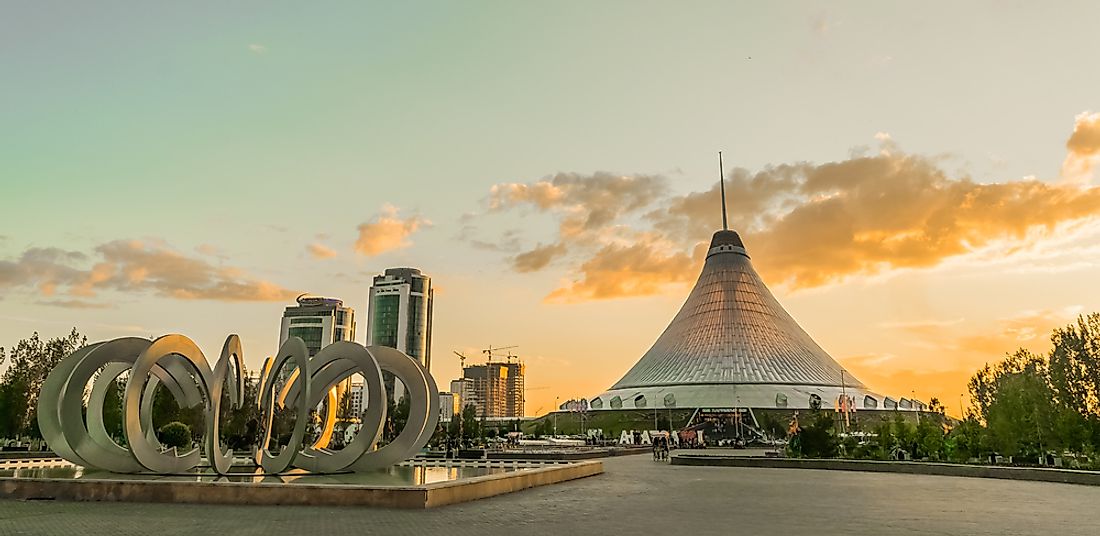What Is The Capital Of Kazakhstan?

While most cities in the world developed spontaneously, Nur-Sultan (formerly Astana), the capital city of Kazakhstan was a result of a design drawn by a Japanese architect called Kisho Kurokawa. In a bid to consolidate all government offices in one location, the modern city brought together the parliament, Supreme Court, the presidential palace, and virtually all government departments. This was followed by the establishment of several facilities including shopping malls, hospitals, educational centers, sports stadiums, tourist sites, and recreational theatres. Nur-Sultan is the second largest city in Kazakhstan after the city of Almaty. The location of Nur-Sultan in the central region of the country makes it easily accessible from all corners. The city covers an estimated area of 278 square miles and is home to more than one million residents. The temperatures range between 35 °C in summer to -30 °C in winter.
History of Kazakhstan's Capital City
For about 68 years, the capital of Kazakhstan was Almaty. It served mainly the interests of the Soviet Union at the time. Almaty was the country’s administrative center. However, after the dissolution of the Union, it was important to have a capital that had greater proximity to the people’s need in the Republic of Kazakhstan.
In April 1998, Kazakhstan's government tasked globally renowned architects and urban planning experts to design the future capital. Out of the many submissions, Kisho Kurokawa of Japan had the most modern inclusive design which was subsequently adopted. The plan includes demarcating Nur-Sultan into three districts namely Almaty, Yesil, and Saryarka Districts. A modern railway line was constructed which divides the city into two. One side is the industrial park with middle-class residential houses. The central region just before River Ishim is the central business district where heavy commercial and trading takes place. The lower section is reserved for high-class projects such as the diplomatic residences and modern malls. Sports stadia for football and hockey were also constructed. The design also incorporated schools, universities, and colleges.
In 2019, the city's name was changed from Nur-Sultan to Nur-Sultan.
The Economy of Nur-Sultan
The economy of Nur-Sultan has evolved over several decades to the current vibrant trade and industrial establishment. Infrastructural development has attracted many investors from within and outside the country. The smooth transport system consisting of modern railway, buses, and shared taxis serves the residents efficiently. The government boosted the economy by relocating all its corporations to Nur-Sultan and initiating five megaprojects worth USD108 million (20 billion Kazakhstan money) in the industrial and commercial development including the Nur-Sultan International Financial Centre. The growth of private enterprises is enhanced through the state-owned sovereign welfare fund and the national economic chamber. The city is recognized internationally and was granted a charter to hold the World Expo exhibition in June 2017. It was a huge success hosting seventeen heads of state and over four million participants with the main attraction being the Nur Alem, the biggest Spherical structure globally. The theme of energy in industrial growth was well captured.
Future of Nur-Sultan
Though the CNN refers to the capital as "the world’s weirdest capital city," the current chief planner, Vladimir Laptev is determined to turn the city into a giant commercial center with striking architectural artwork. The magnificent buildings such as Central Concert Hall, Khazret mosque, Palace of peace, Kuz Manay Gas headquarters, and Emerald Tower business center are an indicator of a rapidly developing city.











